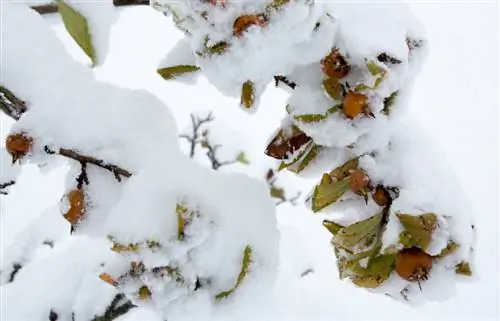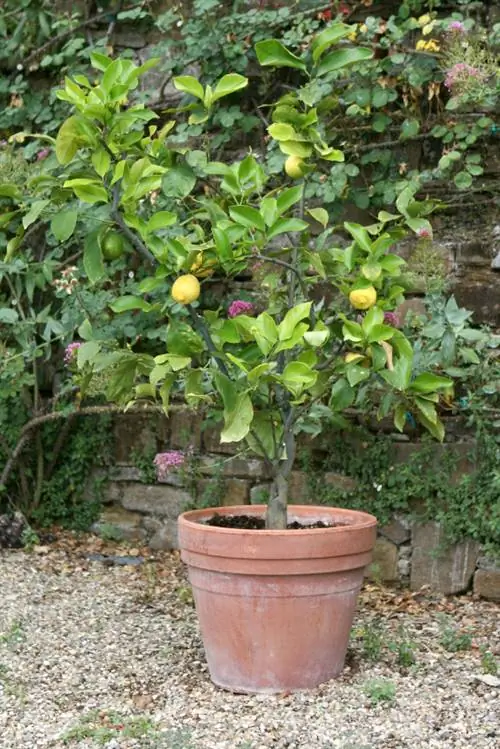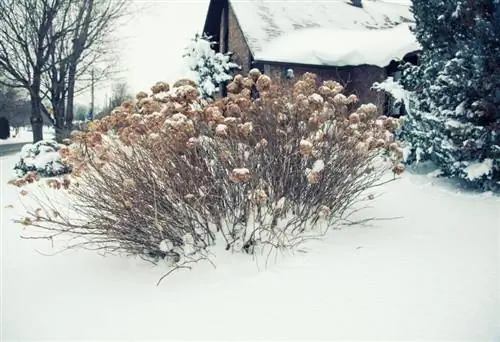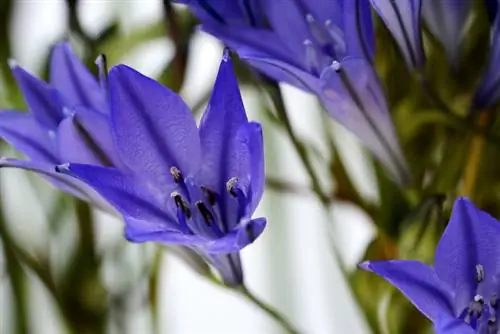- Author admin [email protected].
- Public 2023-12-16 16:46.
- Last modified 2025-01-23 11:20.
A sensitive little one or a tough one - what is the condition of the medlar when it comes to low temperatures? Is it hardy or does it need protection from the icy cold?
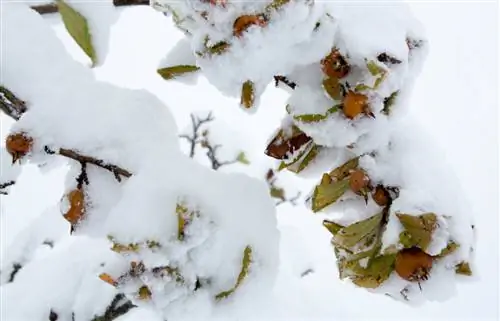
Is the medlar hardy?
The real medlar is well hardy and can tolerate temperatures down to -28 °C in sheltered locations and up to -20 °C in open locations. However, in the first three years of growth, the medlar benefits from frost protection in the root area, e.g. B. through leaves or bark mulch.
Heat-loving yet cold-resistant
The real medlar originally comes from southern Europe and western Asia and grows there in pleasant warmth. But it is well hardy. In protected locations it can tolerate temperatures down to -28 °C. In open and windy locations it can survive temperatures down to -20 °C.
Protect in youth
Winter protection is not necessarily inappropriate. In the first years of its life, the medlar is grateful for protection from excessive cold. As a precaution, you should provide the medlar with frost protection in the root area for the first three years of its outdoor existence. This is especially true in the first year and if you planted the medlar in autumn.
Since the roots need time to take root, they should be protected. This can be done, for example, in the form of a thick layer of leaves (€6.00 on Amazon) or bark mulch. Cover the root area towards the end of October and free the plant if necessary.again at the beginning of April from the protective layer.
And the other medlar species?
The other species of medlar, the so-called cotoneaster, which includes the cotoneaster, for example, are also hardy in our latitudes. Many of them are even evergreen, even at the lowest winter temperatures. The ground cover plants among them can cope with temperatures down to -20 °C.
But potted plants should be protected:
- either place in a protected area such as the hallway or the stairwell
- or cover the bucket with fleece or foil
- or plant the plant outdoors
Tips & Tricks
The fruits of the common medlar need cold temperatures to become edible. Frost causes them to become soft and most of the tannins they contain evaporate. After the frost the fruits taste really delicious!

